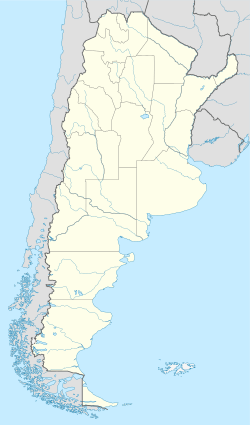Juan José Castelli, Chaco facts for kids
Quick facts for kids
Juan José Castelli
|
|
|---|---|
| Country | |
| Province | |
| Department | General Güemes |
| Population
(2010 census)
|
|
| • Total | 27,201 |
| Time zone | UTC−3 (ART) |
| CPA base |
H3705
|
| Dialing code | +54 3732 |
Juan José Castelli (often called Castelli) is a town in the Chaco province of Argentina. It is about 274 kilometers (170 miles) from Resistencia, which is the capital city of the province. In 2010, about 27,000 people lived there. Castelli is the main town of the General Güemes Department. Many of its people are descendants of Volga German immigrants.
Contents
How the Town Started
The area where Castelli is now was first home to native groups like the Toba and Wichí tribes. Around 1910, some settlers from Salta arrived. They had followed the Bermejo River.
After World War I ended, more people started to move to Argentina. This was especially true after 1923. At that time, there was a big effort to grow cotton in Chaco. Because of this, many European immigrants came to the area. In 1928, Castelli was officially started as a farming community. It was about 100 kilometers (62 miles) north of Presidencia Roque Sáenz Peña.
New Families Arrive
In June 1931, about 320 families from the Volga German region arrived. They brought their furniture, tools, and even farm animals with them. These families, about 2,300 people in total, had been living in La Pampa and western Buenos Aires. But they had to move because of bad harvests and money problems. Growing cotton was seen as a way to become rich back then.
Besides the Volga Germans, many other immigrants also came. These included people from Poland, Romania, Spain, Paraguay, Hungary, Czechoslovakia, Italy, Yugoslavia, and Ukraine.
Connecting by Railroad
On June 17, 1936, Castelli was connected to Presidencia Roque Sáenz Peña by a railroad. This was a very important event for the settlement. It led to the official founding of the town. Locals celebrate October 3 as the town's founding day. However, the official government date was February 2, 1938.
Castelli Through the Years
The town faced challenges during World War II. The Allies (countries fighting against Germany) blocked trade. This meant that Germany, which bought a lot of cotton from Castelli, could no longer do so. This stopped shipments of cotton.
However, after 1941, the price of cotton around the world went up. From then on, Castelli began to grow and improve. A branch of the Nación Bank opened in the town in 1952. The Güemes Hospital was also built in 1956.
Life in Castelli Today
In the 21st century, Castelli has many different cooperative groups. These groups work together on things like farming and providing electricity to rural areas. They also work on beekeeping (raising bees for honey) and managing forests in a sustainable way. There are also groups for growing fruit.
The town has a traditional gaucho association. Gauchos are like cowboys in Argentina. There is also a community group for the Volga German descendants. Castelli is also home to several sports clubs.
See also
 In Spanish: Juan José Castelli (Chaco) para niños
In Spanish: Juan José Castelli (Chaco) para niños


